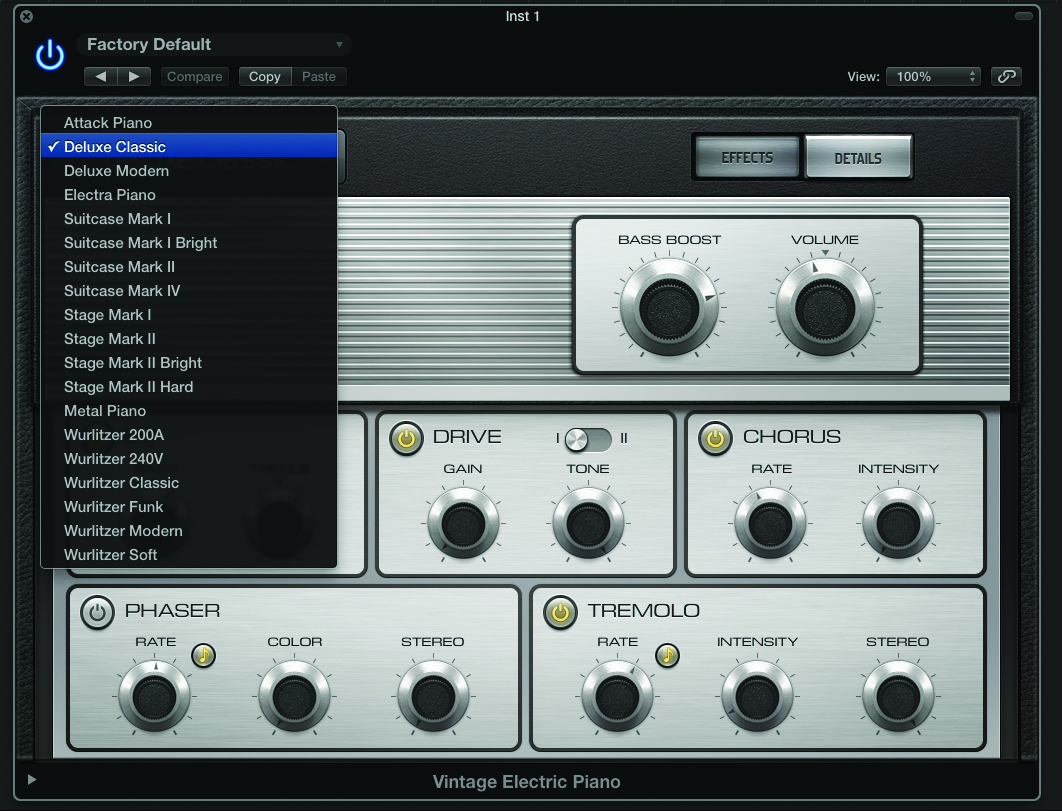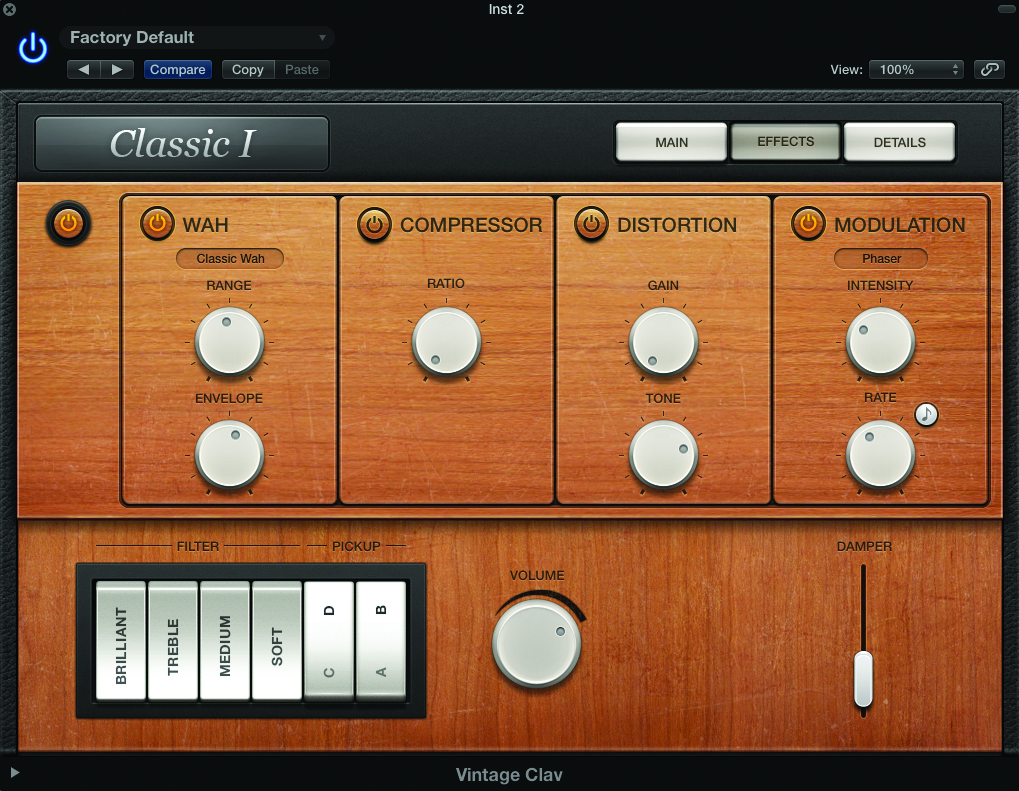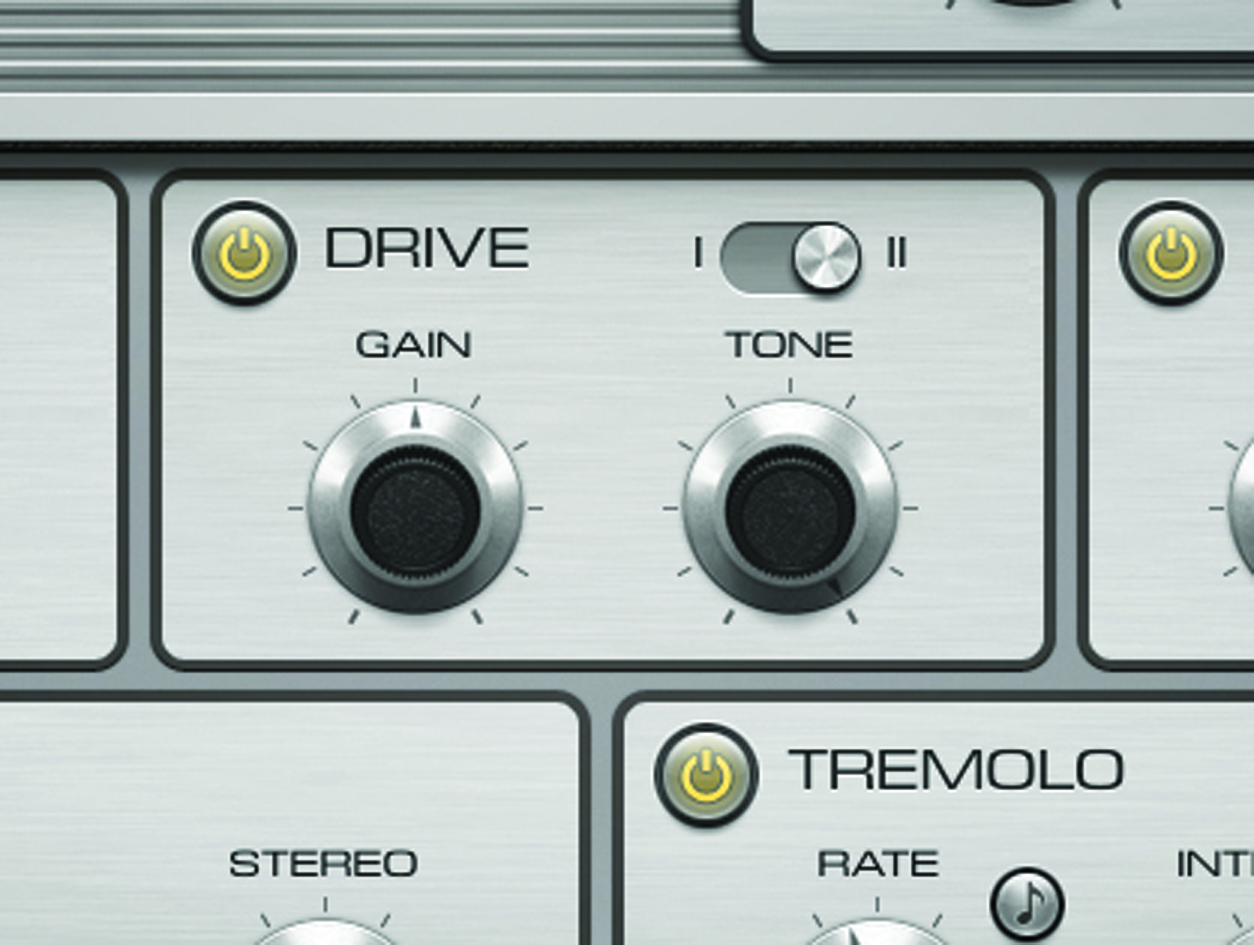Logic Tutorial: Using Vintage Keys
Logic Pro X’s Vintage Electric Piano and Vintage Clav are some of the finest keyboard emulations available. Mark Cousins goes retro. Along with the Vintage B3, the Vintage Electric Piano and Vintage Clav form the trio of vintage keyboard instruments included with Logic Pro X. The appeal of these vintage keyboard emulations is easy to […]

Logic Pro X’s Vintage Electric Piano and Vintage Clav are some of the finest keyboard emulations available. Mark Cousins goes retro.


Along with the Vintage B3, the Vintage Electric Piano and Vintage Clav form the trio of vintage keyboard instruments included with Logic Pro X. The appeal of these vintage keyboard emulations is easy to see. Firstly, they provide an instant splash of retro charm to any music they grace – whether it’s a rusty old fender Rhodes in a trip-hop inspired composition, or a more funkalicious Clavinet adding a distinctive 70s vibe. Secondly, they respond and play like musical instruments, with unique sonic quirks and a sound that responds to the dynamics and shape of your playing.
Rather than being based on samples of an existing instrument, Logic Pro X’s Vintage Electric Piano and Vintage Clav are both examples of modelled instruments. Rather than simply recording an old Rhodes, software engineers looked at how these instruments behave – the sonic traits of their basic sound, and how the timbre changes in response to the player’s performance and the controls found on the instrument.
Although much harder to code, modelled instruments are often highly responsive to your playing and as another bonus, editable in ways that sample-based instrument can never compete with.
Pleasingly, both Vintage Clav and Vintage Electric Piano sound ‘on the money’ right from the moment you load the default setting, which is testament to the detail on the modelling. One parameter that you might want to explore immediately, though, is the choice of model, found in the top left-hand corner.
In effect, the model selects a completely different instrument, so that, in the example of the Vintage Electric Piano, you might move between the sound of a Fender Rhodes and that of a classic 200A Wurlitzer (the quintessential Supertramp keyboard sound, in other words). You’ll also find different model numbers, Stage and Suitcase models, as well as clean and ‘distressed’ versions.
To keep their operation intuitive and as close to the originals and possible, both the main pages on the Vintage Clav and Vintage Electric Piano feature a simplified control set similar to what you’d find on the original instrument. In the case of the Vintage Electric Piano, the original controls were relatively limited (just Bass Boost and volume) although some units would feature tremolo controls, replicated in the bottom right-hand corner of the interface.
Instead, the main controls of the Vintage Electric Piano focus on the additional effects that many players use – chorus and phasing – as well as some basic colouristic tweaking in the form of drive and EQ.

Vintage Clav Up Close
Compared to the Vintage Electric Piano, the Vintage Clav controls are slightly more esoteric and less intuitive to the newcomer, thanks to six elusive rocker switches covering the filter and pickup operation.
To modify the tone of the Clavinet, the original D6 had a series of rocker switches (Brilliant, Treble, Medium And Soft) that operated as a series of band-pass filters running in parallel. In theory, the rocker switch is active when it’s set towards the player. As such, the original unit produced no sound when all the rocker switches were away from you – a behaviour that (perhaps thankfully) hasn’t been modelled on Logic’s Vintage Clav.
Creating your chosen timbre on the Vintage Clav, therefore, either means using just a single rocker switch to plant the Clavinet’s timbre in a distinct part of the frequency spectrum, or a more full sound that uses a combination of the rocker switches, or indeed all the switches in tandem. The other rocker switches govern the pickup selection, much like the pickup selection on an electric guitar.
With C active, the A/B switch moves between the Neck and Bridge pickup, with A having a warmer sound to B. With D active, both pickups are used, but this time the A/B rocker switch controls phase, again result in the B sound being thinner than A.
Both the original Clavinet and Fender Rhodes were examples of an electro mechanical musical instrument that used a combination of physical components (tines in the case of the Fender Rhodes and steel strings in the case of the Clavinet) and electromagnetic pickups to amplify the sound.
As such, there’s a distinct similarity between the sound of an electric guitar and that of the Vintage Electric Piano and Vintage Clav. Indeed, given the need to play through an amplifier to be heard in a rehearsal, most players would play their instrument through a guitar amp like the Fender Twin Reverb, or even use guitarists’ footpedals, like chorus and phasers, to liven-up the sound.
Given these similarities, it makes great sense to pair both instruments with instances of Pedalboard and Amp Designer, with Pedalboard’s output flowing into Amp Designer.
The use of Amp Designer adds distinctive mid-range colouration, and if you use a touch of drive, an added layer of distortion, these can help define the instrument’s place in the mix. The use of Pedalboard also increases the possibility of using effects, giving a greater variety of chorus and wah-wah options (in addition to those found on the instrument themselves) as well as the addition of effects like delay that aren’t found on either instrument.
Going deeper still, both instruments offer a Details page that lets you mod the instrument with incredible levels of detail. Although it’s nice to have control over aspects like damper noise, for example, or the stiffness of the string, you might find that the input of the Details page over the broad sound of the instrument to be relatively negligible.
Ultimately, the fun of these plug-ins is to use them like the real instrument – in other words, they should be played ‘by hand’ and subject to copious amounts of abuse thanks to an array of footpedals and an amplifier turned (of course) up to 11

Changing Pickup Position
One of the more intriguing aspects of the Vintage Clav modelling controls is the ability to reposition the pickups. To understand how this works it’s best to start with just one pickup (rocker position C) and move the pickup to hear the different sounds. Positioned horizontally at the middle of the string, the sound is at its strongest, throughout the entire keyboard range.
As you move the pickup upwards or downwards the sound becomes thinner, and if the pickup is angled slightly, the sound becomes thinner towards the top and bottom of the keyboard. Add a second pickup, with or without phase reversal and a degree of pickup-based stereo width, and you can achieve some pleasing hybrid tones that balance the thinner and fatter sounds of the instrument.
Click Here for Step-by-Step
This tutorial is endorsed by Point Blank. With courses in London, online and now in LA, Point Blank is the Global Music School. You can study sound to picture on their Music Production Diploma courses, with pro industry tutors.
